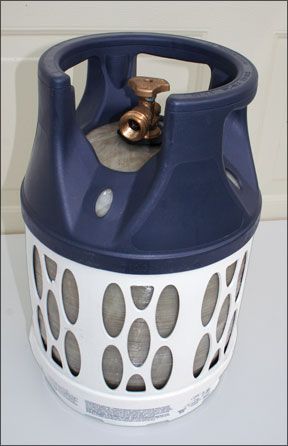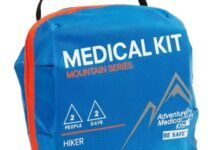Having had our propane supply run bone-dry at the worst possible time, we were drawn to the translucent composite liquid propane gas (LPG) tanks, which recently gained the approval of the U.S. Department of Transportation (DOT). The new tanks do not corrode and allow the user to see remaining fuel.

We found two types: Ragasco one-piece blow-molded tanks made in Norway, and two-piece molded tanks (with a seam joining the top and bottom) made by Lite Cylinder Co. in Franklin, Tenn. We obtained a 9-kilogram Ragasco tank from distributor Trident Marine (www.tridentmarine.com) for testing and noted that its dimensions (12.5 inches in diameter by 18 inches high) differed slightly from that of its 20-pound aluminum or steel equivalent. The tank may not fit in some propane lockers. The dimensions for the composite tank are actually smaller, but it is broader at the top and bottom.
We also noted that the external polyethylene web that encases the tank negated one advantage of a composite tank, the ability to easily fix a remote tank sensor (see “External Holding Tank Sensors,” February 2008). The Lite Cylinders, advertised by Defender Marine, (www.defender.com) expose more tank wall, so it may be possible to fit an external sensor.
The Ragasco tanks have been in use in Europe for several years and underwent extensive testing to get DOT approval. A two-piece composite tank split at the seams during fire tests, but neither tank type experienced a boiling liquid expanding vapor explosion (BLEVE), the type of fatal explosions documented in metal tanks.
If you are happy with your inspected aluminum tanks,
Practical Sailor sees no real reason to switch right away. But if you are looking to upgrade, the composite tanks (a 9-kilogram tank costs about $100) allow you to better track fuel consumption. Whatever tank you use, it and its valves should conform with national safety standards (www.userpropane.com), and the onboard system should meet Standard A-1 from the American Boat and Yacht Council (www.abycinc.org), which covers the propane fuel system safety





































